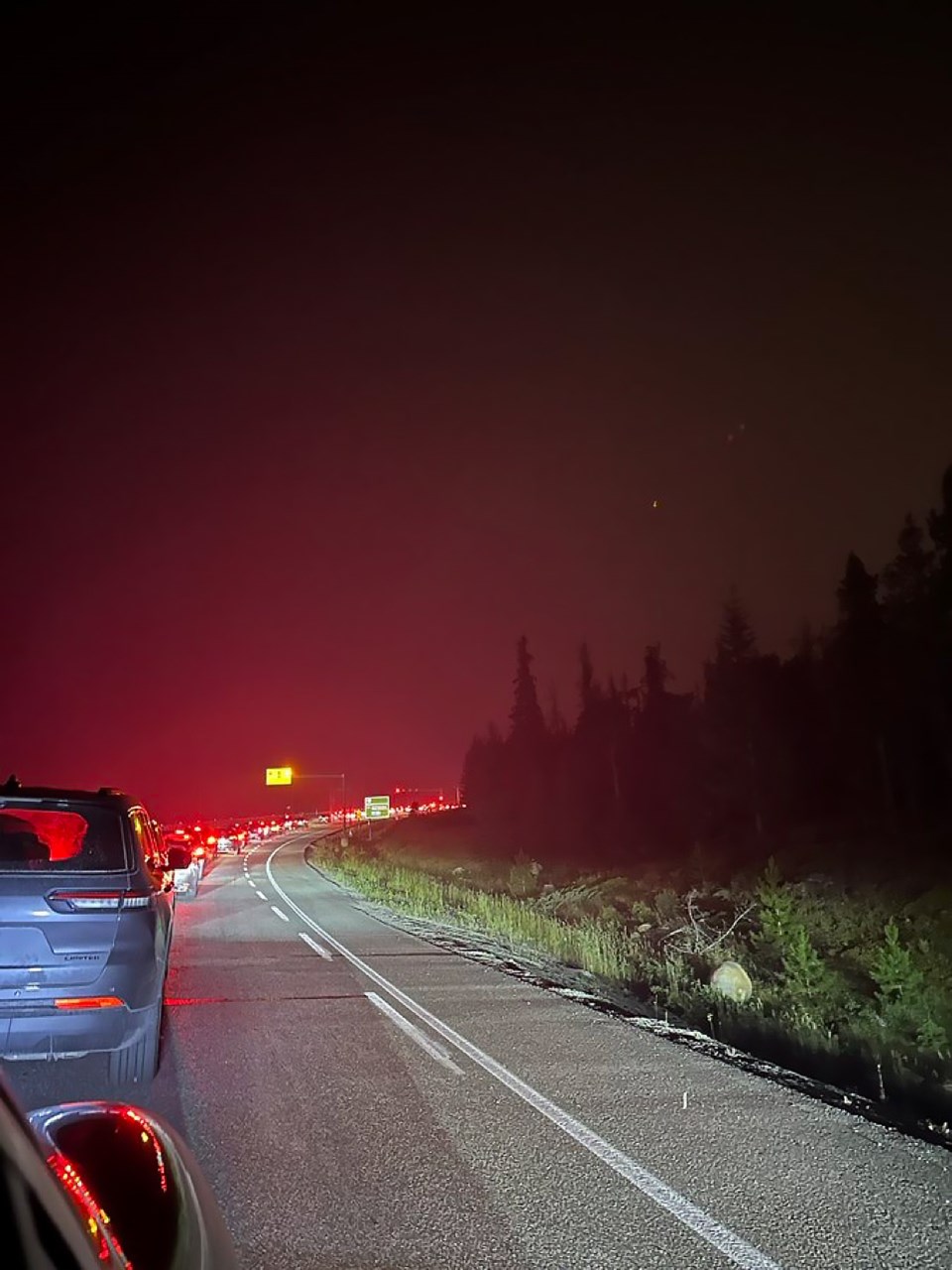Banff Mayor Corrie DiManno said the Town of Banff commends Jasper National Park for the safe evacuation of residents and visitors and "we continue to be in awe of the first responders."
"There are no words, only tears. Banff’s heart is broken watching the devastation in our sister community," she said.
Following the evacuation of residents on Monday and into Tuesday, DiManno said it’s not too much of a leap to imagine a similar situation happening in Banff.
“When we enter the summer season and the smoke comes in from other communities that are currently battling wildfires, the anxiety levels in town go up,” she said.
“When you see your sister community going through the danger of wildfire, it becomes that much more real for us.”
That said, DiManno noted she has the utmost confidence in the Town of Banff administration and the municipality’s emergency and evacuation plans.
“We were shown some modelling earlier this year as it relates to evacuating the south side,” she said.
“Those plans were considered advanced and that we could evacuate that whole area of town in the time it takes to drive to Calgary and back.”
While wildfire smoke is blanketing the skies above Banff from wildfires in B.C. and Alberta, there are currently no fires close to the community.
Katherine Severson, director of emergency and protective services for the Town of Banff, said the municipality has a robust evacuation plan for all types of hazards and for all times of year that considers the unique geographical and infrastructure challenges within the community.
“There is no secret that the Town does consider our entire roadway network and the challenges that it poses, but within that complex series of variables are included things like the time of year, the time of day that an evacuation might be required and the hazard that’s necessitating it,” she said.
“At the end of the day, we look at all of those variables within our infrastructure and look at how we can plan to mitigate them and the evacuation plan considers all the features in our roadway network and that’s what we plan for.”
The traffic management plan guides how the Town of Banff would work through the challenges associated with the bottleneck at the Bow River Bridge and the entire roadway network, which includes the car-free pedestrian zone on the 100 and 200 blocks of Banff Avenue should disaster strike,Severson said
There are also restrictions with having only two exits out of the townsite onto the Trans-Canada Highway, which is also the only way to get east or west of the Banff townsite, she said.
“It’s not any one roadway that we look at; we have to consider that any of them could be threatened in the context of a wildfire or any other incident,” she said.
“The pedestrian zone is not weighing in higher or lower than any of the other variables. We have to prepare for all of these variables that are challenges for us.”
Severson called on all residents to sign up for both the Alberta emergency alert system as well as the Voyent Alert mass notification system used by the Town of Banff at https://banff.ca/alert.
“That’s how we’re going to notify residents of an evacuation,” she said.
The Town of Banff also has a dedicated webpage on emergency preparedness and evacuation found at https://banff.ca/emergency.
“I want everyone to seek out the Town of Banff evacuation guide and that includes everything on the website about personal preparedness and an evacuation checklist,” Severson said.
Banff fire chief Russ Geyer said the fire department is always training in preparation for an emergency.
“It was in the spring of this year that we were doing wildfire training in the snow, so we start early and practice and review,” he said.
The fire chief called on residents to FireSmart their homes, including raking up dry leaves and needles.
“If something ever would happen here, then we’re one step closer and there’s less work for the fire service to do when it’s just the situation like Jasper when people have to leave on a short notice,” Geyer said.



